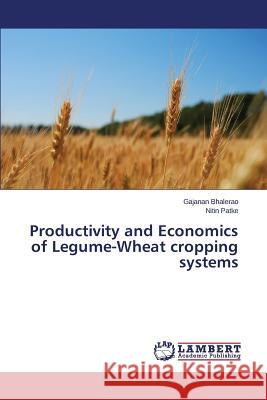Productivity and Economics of Legume-Wheat cropping systems » książka
Productivity and Economics of Legume-Wheat cropping systems
ISBN-13: 9783659773488 / Angielski / Miękka / 2015 / 112 str.
Higher demand for food grain on account of alarmingly increasing population has consequently put an extra pressure on availability of cultivated land area per capita. Adequate food grain could only be produced from this meager area through intensification of cropping both in space and time dimensions. Intensive cropping in post green revolution era has swung in favor of cereal-cereal rotation owing to higher and stable yields. However, intensive rotations are highly exhaustive for soil nutrients and if not properly nurtured, may result in poor soil health. Sufficient quantities of the supplementary sources may not be available and hence an integrated approach including knitting of legumes in cropping system has been holding the prime importance. Inclusion of legumes in system modifies the response of non-legume to applied fertilizers and also better physico-chemical and biological properties of soil.
Higher demand for food grain on account of alarmingly increasing population has consequently put an extra pressure on availability of cultivated land area per capita. Adequate food grain could only be produced from this meager area through intensification of cropping both in space and time dimensions. Intensive cropping in post green revolution era has swung in favor of cereal-cereal rotation owing to higher and stable yields. However, intensive rotations are highly exhaustive for soil nutrients and if not properly nurtured, may result in poor soil health. Sufficient quantities of the supplementary sources may not be available and hence an integrated approach including knitting of legumes in cropping system has been holding the prime importance. Inclusion of legumes in system modifies the response of non-legume to applied fertilizers and also better physico-chemical and biological properties of soil.











